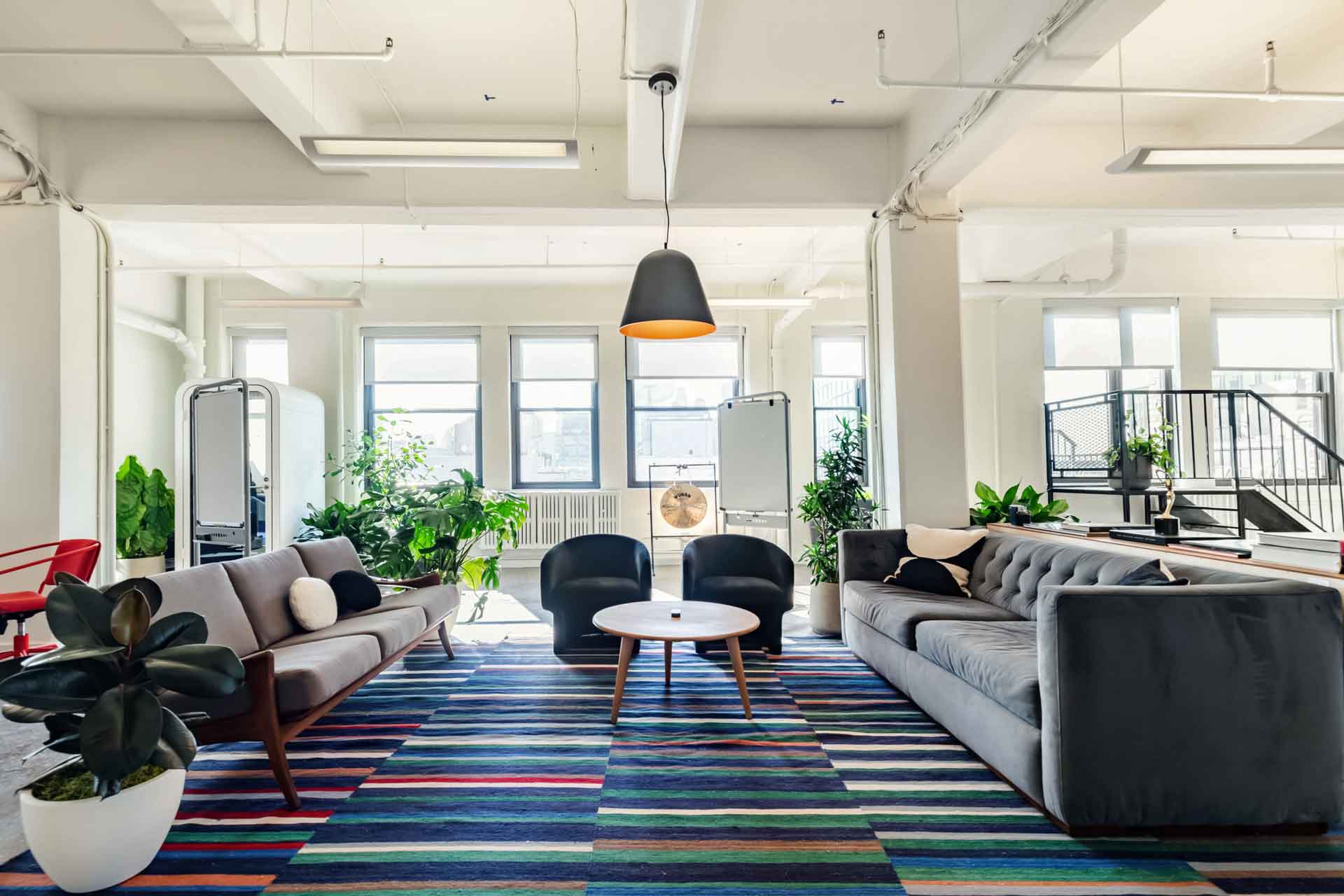
31 Aug 5 Future-Proof Workplace Design Trends
It might not feel like it yet – *turns up air con* – but the steamy summer days will soon give way to crisp autumn air.
At this time of year there’s always a palpable sense of fresh starts and renewal in the air – the buzz of a new school term, the launch of fresh fashion collections – and New York City buzzes with the best of them.
In this way, September, more than January, often feels like the true start of a new year.
And that makes right now the perfect time to think about fresh takes on the office space.
Whether you’re considering a small budget-upgrade or a complete redesign and build, being in the know on emerging workplace trends is vital for delivering a workplace that supports productivity, wellbeing, flexibility – and long-term success.
It’s what we’re exploring in our latest blog – delivering five future-proof design trends that will keep your workspace ahead of the curve and ensure it remains as dynamic and forward-thinking as New York itself!
Let’s dive in…
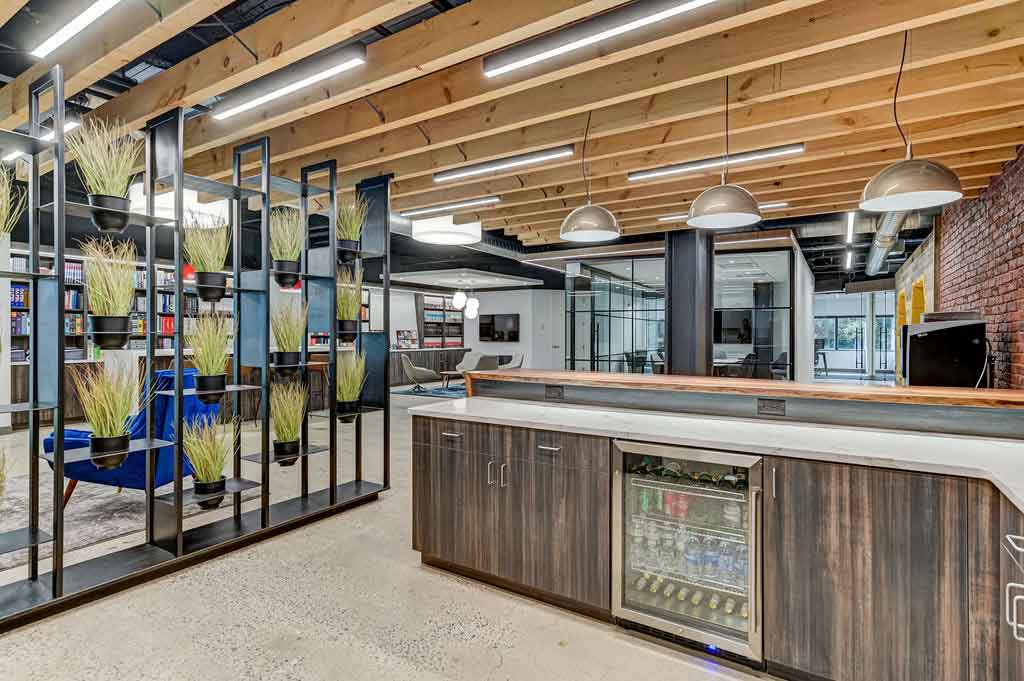
1. Biophilic Design is Here to Stay
Hybrid working has become the new norm, reshaping how we think about office design. Typically, this involves switching around existing spaces and furniture to create more collaborative and flexible work environments. And this idea is here to stay.
The goal of effective hybrid design is to craft spaces that transcend physical and social barriers and enhance the in-person office experience.
Employee well-being and engagement will never go out of style – and biophilic design, which integrates natural elements into the workspace, has emerged as a vital forever-trend that promotes productivity and overall health and wellbeing in the hybrid space.
Explore our blog on incorporating biophilic design into your space here.
Prioritize natural textures, natural light and incorporate greenery to enhance the overall workplace experience. Connecting employees to nature and creating a calming atmosphere (with elements such as FSC woods) is conducive to productivity and creativity – and will never go out of style.
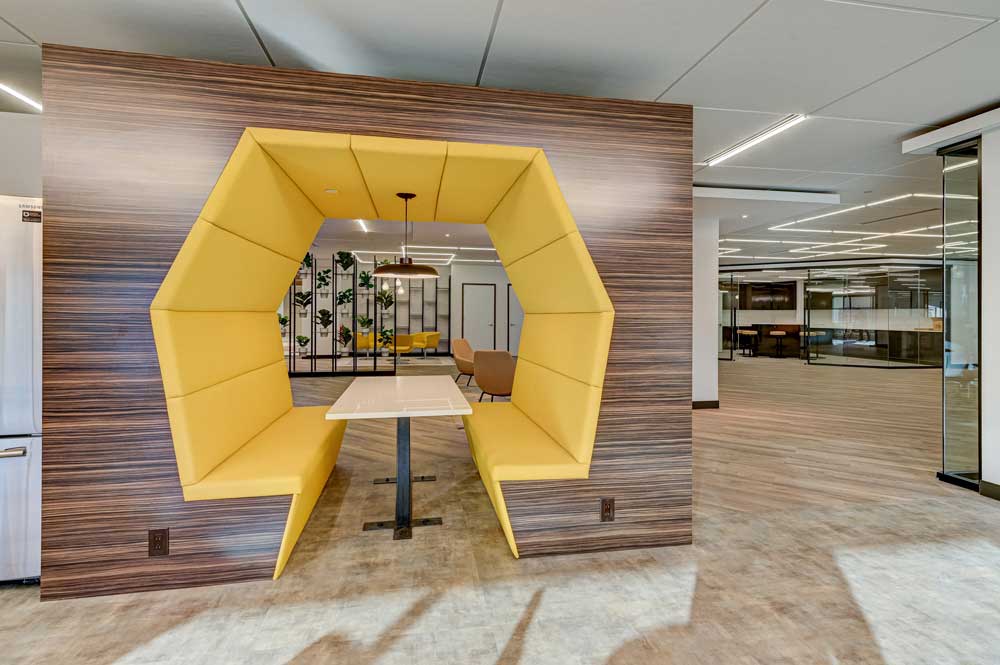
2. Sustainability for Future Success
In an era of climate crises, businesses increasingly recognize their crucial role in shaping a sustainable future. Sustainability and the need for green office design has shifted from a nice-to-have to a core business priority.
Leading workplaces – which reflect societal trends on a smaller scale – fundamentally integrate sustainability and eco friendly office design into their core ethos.
Indeed, amidst a volatile and unpredictable world, sustainable practices have become a strategic imperative. Gen Z and millennials expect nothing less from their employers.
Embracing sustainability goes beyond reducing carbon footprints; it involves a holistic approach, including energy efficiency (LED lighting and sensor technology are staples of energy efficient office design), waste reduction, and social responsibility.
Forward-thinking companies are investing in eco-friendly initiatives such as renewable energy, waste recycling, and sustainable supply chains. These efforts contribute to environmental conservation and generate cost savings and operational efficiencies, proving that ‘going green’ is both good for the planet and the bottom line.
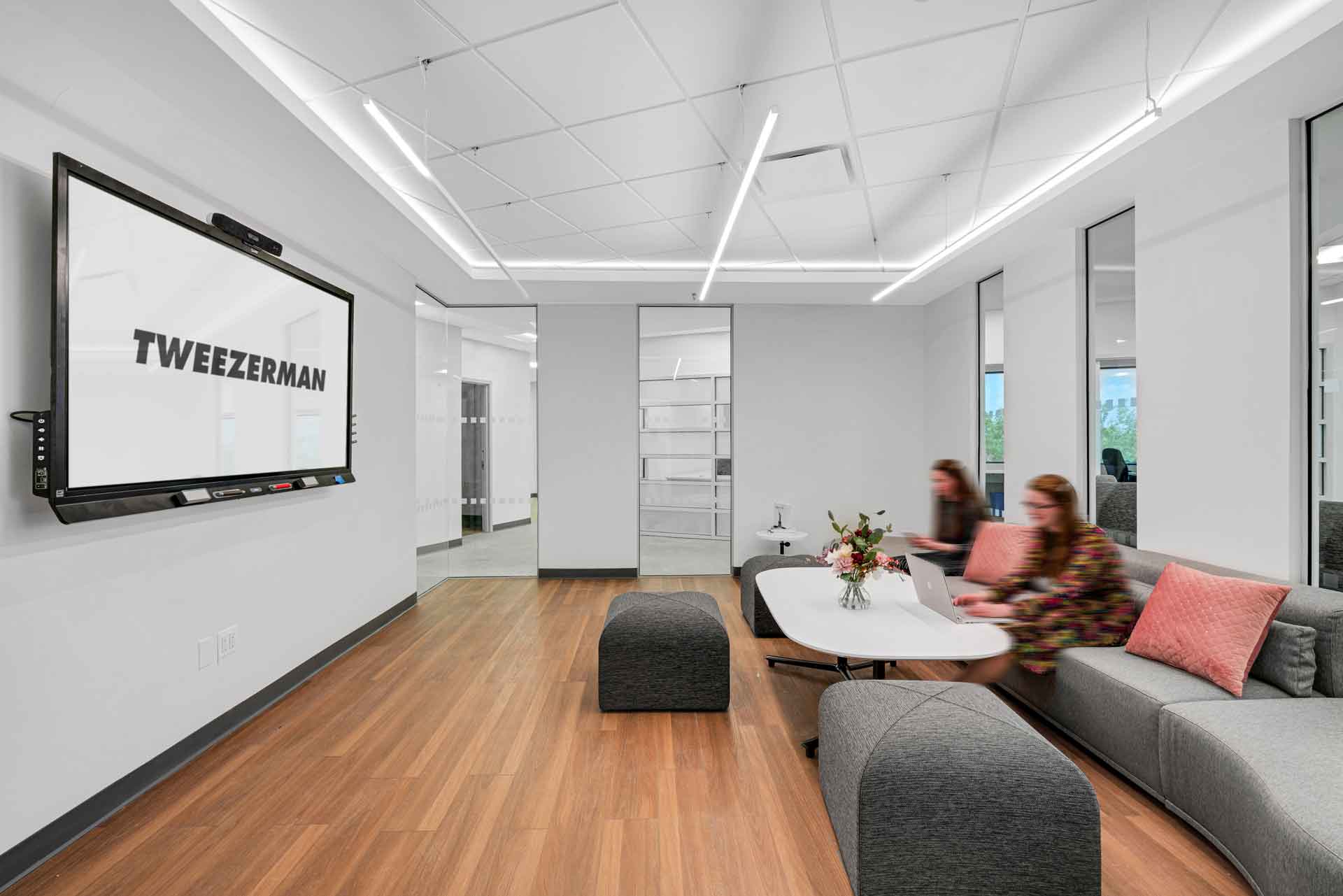
3. Muted and Neutral Tones to Support Neurodiversity
Neurodiversity and sensory needs are a huge consideration for all forward-thinking companies. In workplace design, this can look like opting for muted and neutral color palettes as a starting point.
Shades such as creams, ivories, and light browns are not only soothing on the senses of all neurodiversity types, they also offer a timeless and versatile aesthetic.
Neutrals also create a backdrop that allows for personalization, whether that be murals that reflect your brand, living walls or custom design features.
Elsewhere, warm earthy tones, such as terracotta and burnt oranges are also gaining popularity, adding depth and warmth to office spaces.
While bold colors and textures can be effectively used to make a statement in different zones and furnishings within a workspace, neutral flooring choices remain a staple for creating flexible and adaptable work environments.
Flooring options that are timeless and versatile provide a foundation for incorporating bolder design elements, ensuring a harmonious and dynamic workspace. White oak flooring, for instance, will bring both serenity and sustainability to your space.
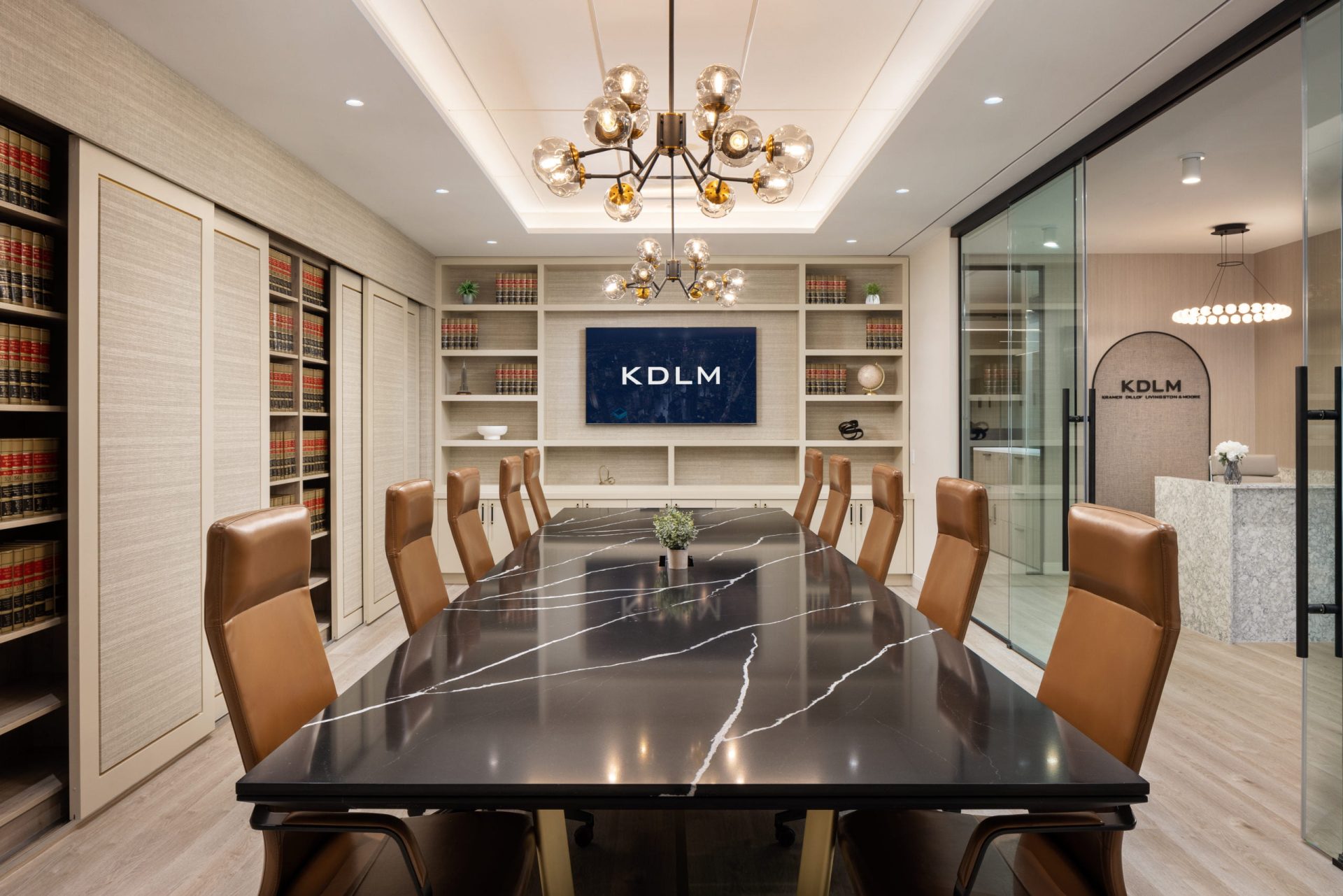
4. Ergonomic Furniture is Forever
To promote health and wellbeing in your office then ergonomic furniture is a must-have.
Ergonomic workplace design, the science of designing a workplace to fit the worker, has made a significant impact on office furniture design and will continue to do so. Ergonomic furniture supports good posture, reduces the likelihood of developing musculoskeletal problems, and promotes health and productivity.
Chairs should have adjustable seat height and depth, lumbar support, and a reclining feature. Executive desks should have an adjustable height for standing or sitting and ample space for computers and paperwork. Consider introducing monitor arms for better screen positioning, keyboard trays for comfortable typing, and footrests for enhanced comfort. It’s the key to effective ergonomic workplace design. And ergonomic office design is the future.
5. The Future is Technology Integration
The World Economic Forum’s 2023 Future of Jobs Report highlights that technology adoption will be crucial in transforming the workplace over the next five years, with significant structural changes expected in approximately 23% of workplaces.
This transformation, driven by rapid technological advancements, is greatly impacting office design and workspace functionalities.
As job roles evolve, so too does the need for environments that support new ways of working. The traditional office model, with its static cubicles and rigid layouts, is becoming obsolete.
Instead, leading companies are embracing adaptive, fluid spaces that cater to various tasks, from deep-focus work to collaborative brainstorming sessions and rest and relaxation. For more on this subject, discover our Workplace Retreat design solution.
To keep your finger on the pulse of evolving design trends and future product innovations, dive into design guides such as Wallpaper and Dezeen and check out news from annual interior design trades shows, such as NeoCon in Chicago.
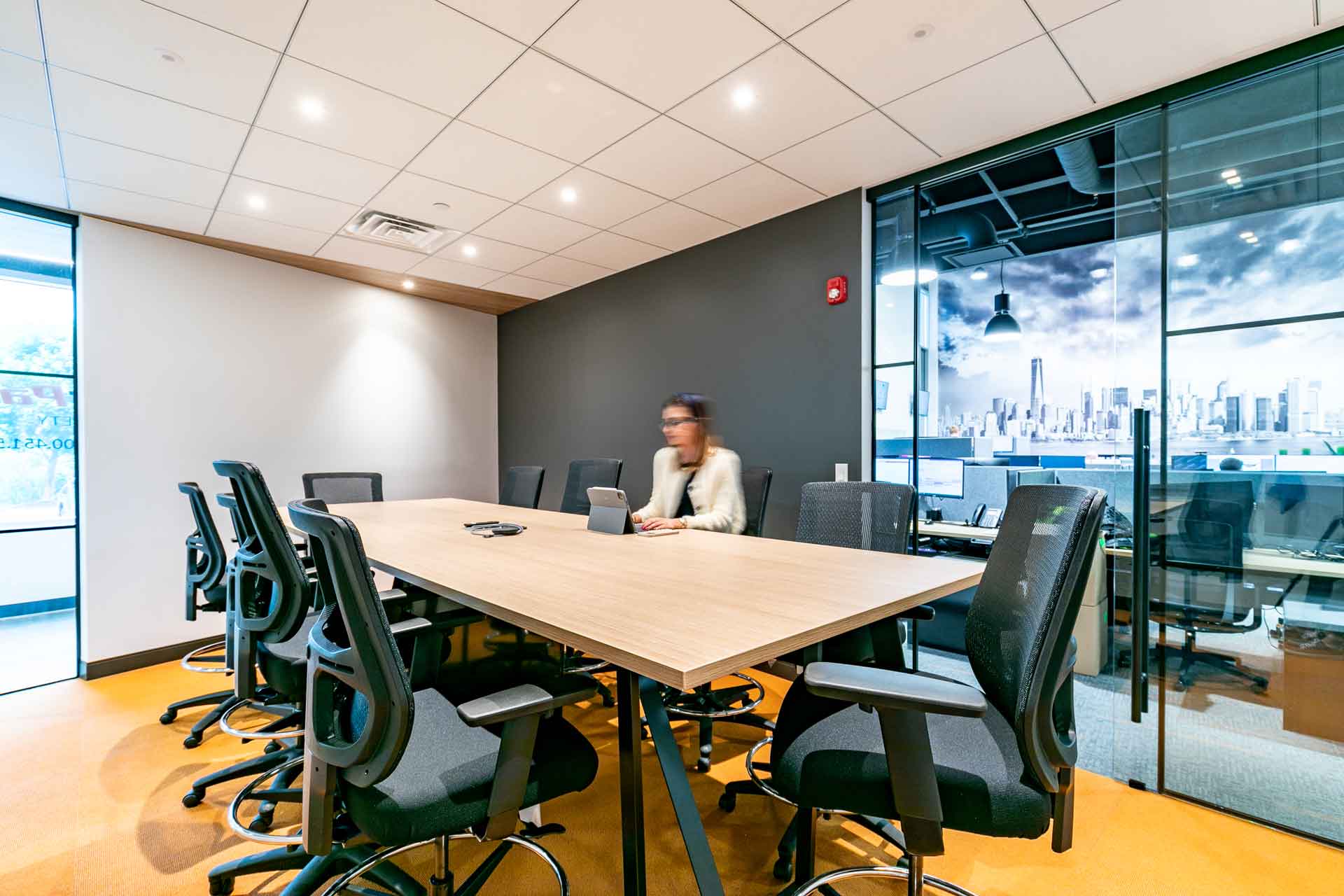
To sum up
By incorporating forward-thinking strategies – green office design, tech integration and ergonomic workplace design – into your approach, you can create a workspace that not only meets current demands but also adapts to future trends and challenges.
For expert guidance and design support tailored to your workplace needs, book a free consultation with our award-winning team.


















